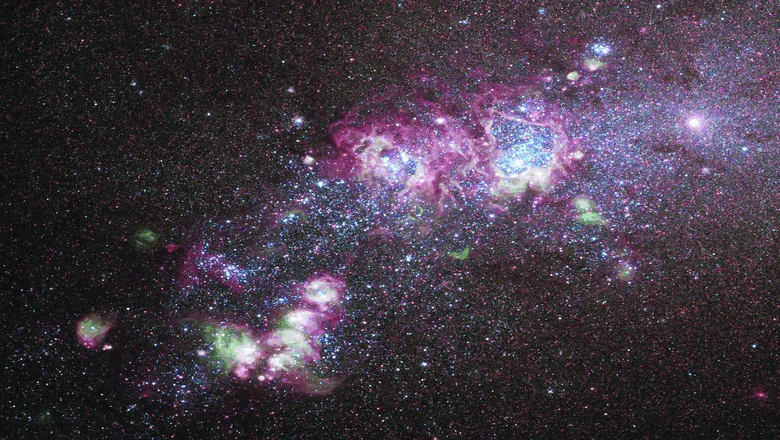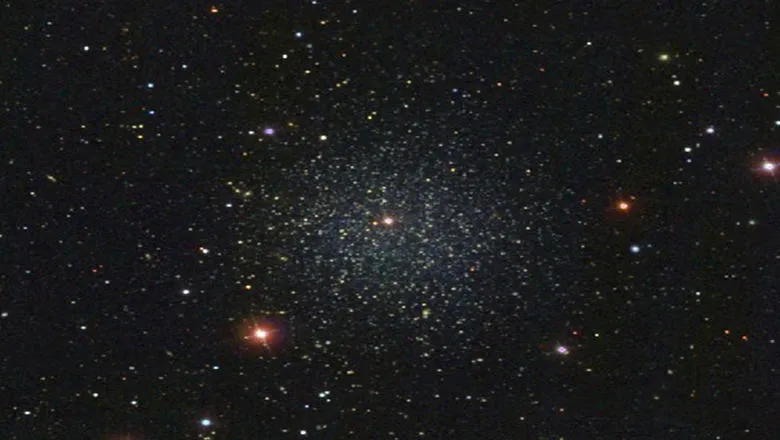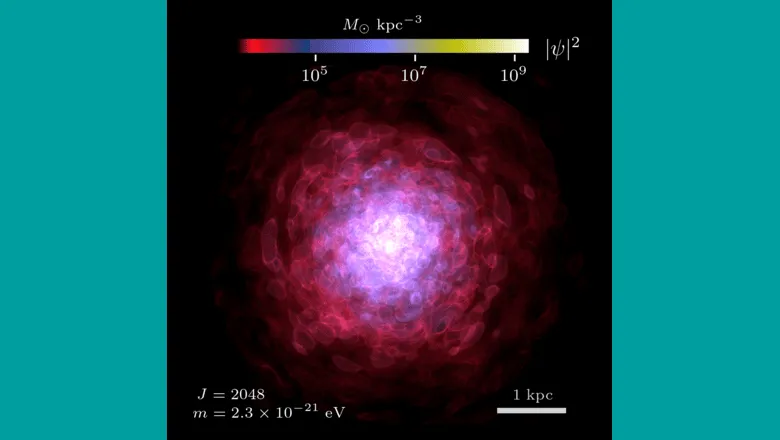This has been a back of the envelope calculation for decades... The reason why this question has remained unsolved for so long is because it is very computationally complex, requiring machine learning to crunch the numbers. However, the result is a mathematically sound lower bound of dark matter two orders of magnitude stronger than before.”
Dr David Marsh
14 April 2025
Dwarf galaxies reveal new lowest mass for dark matter
The new minimum weight for the mysterious substance could finally help solve a problem that has occupied scientists for 40 years.

Scientists have discovered a new lower bound for the mass of dark matter, definitively solving a question as old as dark matter itself.
Published in Physical Review Letters, the new bound is two orders of magnitude stronger than previous results and is the most precise minimum mass of dark matter to date.
Dark matter is the so far unobserved matter which physicists suggest could make up to 85% of all mass in the known universe, and efforts to put tighter and tighter constraints on where it could be hiding has been the work of many scientists. Following a paper first published in 1985 and two more in 1995 and 2000, this process often begins by putting an approximate lower limit on dark matter’s mass by using the de Broglie wavelength.
A core component of quantum mechanics, the de Broglie wavelength is the wavelength of a moving particle where you can begin to understand its quantum, wave-like properties. When it comes to dark matter, it is thought that the mass of a dark matter particle must be large enough that it’s de Broglie wavelength is smaller than the radius of the galaxy it is in.
While this lets scientists guess how light dark matter could be using this principle if they know the orbital speed of galaxies, accurate testing of this principle did not exist – until now.
Dr David Marsh, Ernest Rutherford Fellow at King’s College London and one of the study’s principal authors said, “This has been a back of the envelope calculation for decades, but we wanted to ask the question ‘what is the lowest mass dark matter could have?’ and answer it robustly. The reason why this question has remained unsolved for so long is because it is very computationally complex, requiring machine learning to crunch the numbers. However, the result is a mathematically sound lower bound of dark matter two orders of magnitude stronger than before.”
Because our result relies only on quantum mechanics, observations, and a little bit of maths, it can be applied to any theory of dark matter in any model of the Universe’s history, like the Big Bang theory."
Dr David Marsh
Using advanced machine learning tools and techniques, the researchers from King’s, the University of Oslo, and collaborators analysed the wave-like behaviour of thousands of types of particles in the dwarf galaxy Leo II. This galaxy was chosen because it is well studied by astronomers and dark matter is heavily localised in its small size, meaning that it would require a small and easily observable de Broglie wavelength.

Taking into account the orbital speed of stars in the galaxy, lead author Dr Tim Zimmerman used machine learning to establish the specific properties of each potential dark matter wave, like wavelength. These calculations were then compared against the speed of these stars and the size of Leo II to work out the galaxy’s de Broglie wavelength.
Those waves with a smaller wavelength could be classed as potential dark matter candidates, while larger ones were dismissed. This was repeated thousands of times until a new lower bound was established for dark matter particles – 2.2 x 10-21 electronvolts of mass.

As this measurement relies on applying the principles of quantum mechanics to this observed galaxy, it is not dependent on any specific model of the history of the Universe for validation.
Dr Marsh explains, “Because our result relies only on quantum mechanics, observations, and a little bit of maths, it can be applied to any theory of dark matter in any model of the Universe’s history, like the Big Bang theory. Our result can be applied to theories for hypothetical particles like the axion, or the "dark photon", or "fuzzy dark matter": it doesn't matter what the name is, it just has to be heavier than the lower bound we’ve found.”
The works builds on the previous research of contributor Professor Malcolm Fairbairn, which helped establish a lower bound of dark matter if it was a fermion, one of the two fundamental particles which make up the universe. This research establishes the lower bound of dark matter if it is a boson, the other fundamental particle in the universe which can occupy the same space as each other, making this the absolute lower bound.


